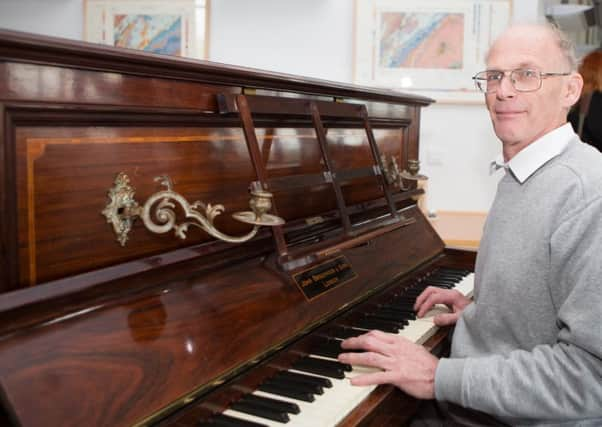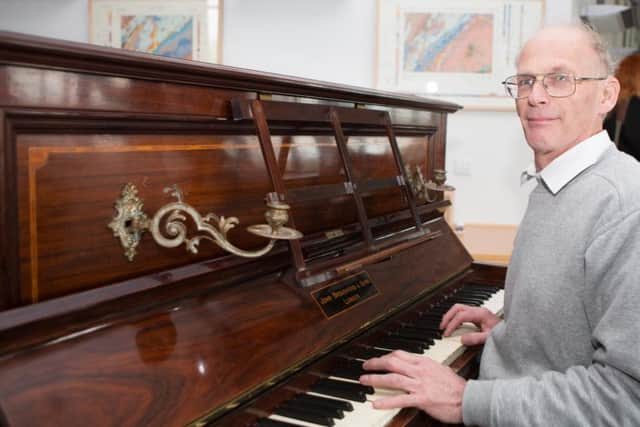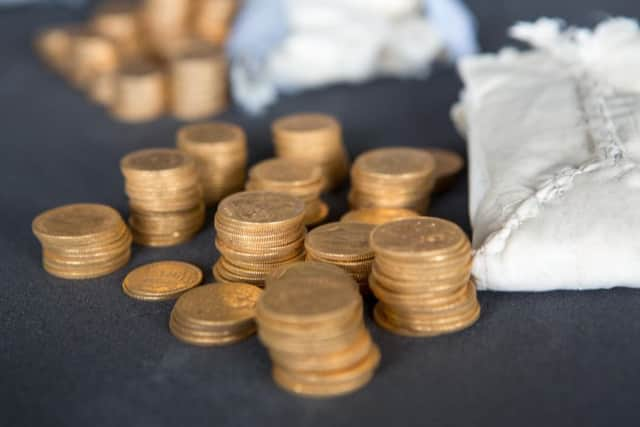Owner of mystery gold treasure trove hidden in piano sought


The 913 coins, found neatly stacked in dusty hand-stitched packages and pouches, were discovered carefully secreted beneath the instrument’s keyboard base while it was being re-tuned.
Ruling the hoard to be treasure at an inquest on Thursday, Shropshire coroner John Ellery said “we simply do not know how they came to be concealed”.
Advertisement
Hide AdAdvertisement
Hide AdDespite an international media appeal, the identity as to who put the cash in the instrument - and why they did so - remains a tantalising unknown.


Experts from the British Museum found the coins ranged in date from 1847 to 1915, consisting of 633 full sovereigns and 280 half-sovereigns.
The coins were found to be 91.7 per cent pure gold, with the majority dating from the reign of Queen Victoria.
The hoard itself - which is yet to be formally valued - is now being held at a secure location, while the piano will be returned to its home in a local school.


However, the British Museum’s Peter Reavill, shedding some light on its potential worth, said: “There’s a substantial amount of money there - enough to buy a house, so equivalent today to about £350,000.
“That’s not to say it’s worth that today, but that’s its spending power.”
For 33 years, the piano was previously owned by Graham and Meg Hemmings, formerly of Saffron Walden, Essex, who used the instrument to teach their children music - and were entirely ignorant of its secret cargo.
Advertisement
Hide AdAdvertisement
Hide AdThe couple, who moved to Shropshire in 2015, then donated the upright Broadwood and Sons-made piano to a nearby school, Bishop’s Castle Community College, last summer, which then decided to have it tuned.


It was tuning technician, 61-year-old Martin Backhouse, who then found the “gob-smacking” stash, initially believing the carefully-wrapped cloth packets delivering bum notes to be bags of “moth repellent”.
Describing the moment of discovery, he said: “As soon as I started lifting out the keys, I thought, uh-uh, what’s this underneath the keyboard?
“I lifted one and thought, that can’t be moth repellent, it’s too heavy.”
Mr Backhouse slit the stitching with his penknife and when he looked inside, he recalled: “Oooh, it looks like there’s rather a lot of gold in this.”


He and the headmaster then moved the 6kg (13.2lb) hoard into the school’s safe and rang the coroner.
Mr Backhouse and the school could now potentially be in line for a windfall from the hoard’s sale.
Advertisement
Hide AdAdvertisement
Hide AdAsked if it ever crossed his mind to keep the money, he said: “No - I could have quite happily swapped them a brand-new piano for that one.
“But that would not have been right or proper.
“As it was gold, I thought that the school needs it just as much as I do, knowing the problems with the pianos in their school.”
Any money would go to his children, he said, adding he may retire early as he suffers with tinnitus.
Meanwhile, Mr and Mrs Hemmings felt no bitterness, praising church-going Mr Backhouse’s honesty in immediately reporting the find.
Mrs Hemmings, 65, said: “The sadness is, it’s not a complete story, they’ve looked and searched for the people and they unfortunately haven’t come forward.
“It’s an incomplete story - but it’s still an exciting story.”
During the hearing, Mr Reavill said that in 1926 the coins would have been worth £773, which was well above the average £619 cost of a house at the time.
The hoard was probably “re-packaged” some time during the Great Depression era, because one of the packets contained an old Shredded Wheat advertising card.
Exhaustive efforts to trace the owners had failed, he added.